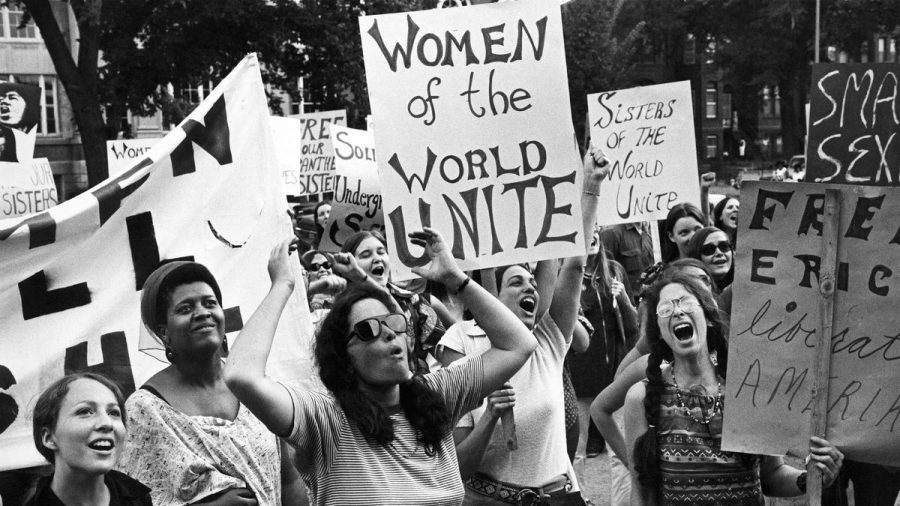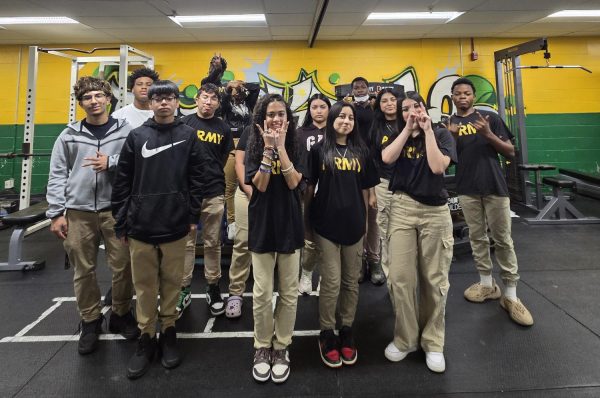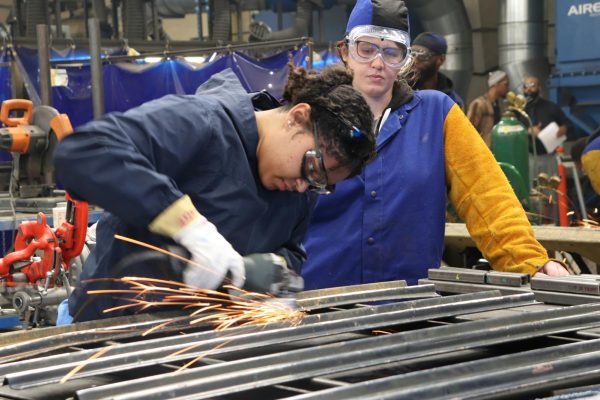American feminism sees much evolution overtime
Throughout our history, there have been many contributors that have helped shape society as we know it. One of these contributors is Feminism. Feminism is the belief that women and men are equal to each other and should be treated as such. The history of Feminism is usually broken down into four waves: the first wave, taking place in the late nineteenth century and early twentieth centuries; the second wave, begins in the 1960s and continuing into the ’90s; the third wave, focusing on the mid-’90s; and the fourth wave, focusing on the last two decades. Although all of these events have gotten us to a better place than we started, there is still work to be done.
Check out this breakdown below to learn more about how feminism rose in importance and prominence throughout the past several centuries:
THE FIRST WAVE
- Seneca Falls Convention (1848)
- The Seneca Falls Convention was the first woman’s rights convention ever held. It took place on July 19th and 20th, 1848 at Wesleyan Chapel in Seneca Falls, New York. The five women who orchestrated the convention were Elizabeth Cady Staton, Lucretia Mott, Mary M’Clintock, Martha Coffin Wright, and Jane Hunt. At the convention, they discussed a manifesto titled “The Declaration of Sentiments.”
- “The Declaration of Sentiments” (1848)
- The Declaration of Sentiments is a document that was primarily written by Elizabeth Cady Staton. The purpose of the paper was to highlight the grievances/ hardships of women and their demands. The document was modeled after the United States Declaration of Independence. One of the more known points made in the paper was the altered phrase, “We hold these truths to be self-evident; that all men and women are created equal.” This served as a response to the original phrase in the Constitution that excluded women.
- National American Woman Suffrage Association (NAWSA) (1890)
- An organization that was the creator in 1890 after the merge of two different women’s rights groups. It was formerly known as the National Woman Suffrage Association(NWSA) and the American Woman Suffrage Association (AWSA). The main purpose of the organization was to push for the ratification of suffrage amendments. Although not all suffrage amendments were ratified, one in particular was. The 19th amendment granted women the right to vote. It was ratified on August 18, 1920.
- Women in the Workplace (the 1930s-1940s)
- After the Great Depression, many women were seeking jobs to provide for their families. This was due to the fact that the Great Depression led men to become depressed and they saw themselves as failures. Women started to find employment in low-paying careers like housework, teaching, secretarial roles, and manufacturing occupations (sewing).
- Due to World War II, many women actively participated in the military or found work in industries that men were previously employed at. They were encouraged to work in these new fields only while the war took place. Once the war was officially over, women workers were replaced with men.
THE SECOND WAVE
- Civil Rights Act (1964)
- The Civil Rights Act of 1964 was implemented to prohibit discrimination based on race, religion, origin, or sex. The act served as workplace protections for both minorities and women.
- National Organization for Women (NOW) (1966)
- The National Organization for Women (NOW) was founded with the goal of promoting equal rights for women. It was established by a small group of feminists, which included Betty Friedan. Friedan was an American feminist writer and activist. She wrote, “The Feminine Mystique” which served as a leading figure in the second wave of American feminism. The organization also contributed to the Equal Rights Amendment (ERA) proposition, which had not been ratified.
- New York Radical Women (1967-1969)
- The New York Radical Women was a radical feminist group that was active between 1967 to 1969. It was founded in New York by Shulamith Firestone and Pam Allen. One of the most famous protests was led in September of 1968 by the group. Protesting stereotypical notions of femininity and rejecting traditional gender expectations.
- Equal Rights Amendment (1972)
- In 1972, Congress passed the Equal Rights Amendment, which demanded legal equality for women as well as prohibited discrimination based on gender. The Amendment received a lot of backlash, which in result, did not lead to the ratification of the amendment.
THE THIRD WAVE
- Anita Hill v. Clarence Thomas (1991)
- Anita Hill accused Clarence Thomas, a Supreme Court nominee, of sexual harassment in 1991. Hill spoke up in front of an all-white male Senate about the issue. In retaliation, Thomas denied everything and claimed he was a victim. Hill received backlash and criticism of her character for the accusation. Thomas was affirmed despite Hill’s allegations. In response to the verdict, Rebecca Walker wrote an article for Ms. Magazine, supporting Hill and embracing the start of the Third Wave. “I am not a post-feminism feminist,” she famously declared. “I am a member of the third wave.”
- Women’s Political Participation (the 1990s)
- By the year 1993, five women had joined the US Senate. The first female Attorney General and first female Secretary of State took office. Ruth Bader Ginsburg became the second woman in the Supreme Court in 1993.
- The Family Medical Leave Act (1993)
- The Family Medical Leave Act was enacted in 1993. The purpose of the act was to allow federal employees to take off up to 12 weeks of unpaid leave for specified family and medical reasons.
- Reproductive Rights (2003-2004)
- When the Supreme Court upheld the Partial-Birth Abortion Ban Act and restrictions on abortion, there was a huge protest march called the ‘March for Women’s Lives in Washington DC in 2004. Activists, Feminists, celebrities, etc. attended the event. The march showed how important the issue of reproductive rights was to the Third Wave of Feminism. The Act was not repealed, and the process of limiting access to abortion continued.
THE FOURTH WAVE
- Me Too Movement (2016)
- The #MeToo movement is a social movement that was started to retaliate against sexual abuse and harassment. Millions of women across the world came together to support one another while speaking out against these terrible acts of violence against them.
- Women’s March (2017)
- The Women’s March took place on January 21, 2017. The march was held to support gender equality, civil rights, and other issues that women were facing. It was held on this day in retaliation against the incoming presidency of Donald Trump. More than 3 million people in cities around the country participated in their own protests to show support for women.
- Time’s Up Movement (2018)
- The Time’s Up Movement is a movement that was started to stand up against sexual harassment towards women in the Hollywood industry. This included female writers, directors, actors, and agents. Some of the men accused were Roger Ailes, Harvey Weinstein, Matt Lauer, Bill Cosby, Bill O’Reilly, Mario Batali, and former Senator Al Franken. This movement served as empowerment for women who have been sexually harassed.
Check out this article on some famous feminists throughout history … 10 Most Famous Feminists in History – Wonderslist
Your donation will support the student journalists of Parkdale High School. Your contribution will allow us to cover our annual website hosting costs and publish some printed editions, as well.
Isabel is a sophomore at Parkdale High school. This is her first year on staff for the Paw Print Newspaper. She also participates in other school activities...







